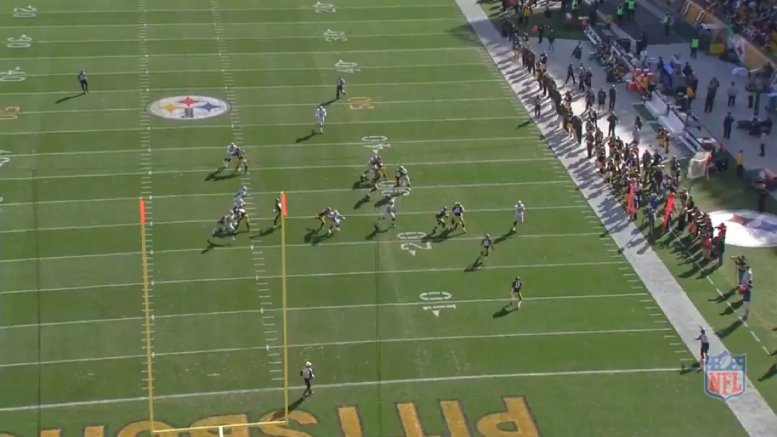Wide receiver Jacoby Jones is the newest member of the Pittsburgh Steelers in spite of the fact that he is a nine-year veteran; he has also been a Steelers nemesis on returns, recording multiple touchdowns against his new team over the years.
But the veteran return man’s debut in Pittsburgh was an inauspicious one, appearing in the game just two days after having been claimed off waivers, and it is safe to say that things did not go as planned.
Head coach Mike Tomlin immediately installed him as the team’s kick returner after the front office released second-year running back Dri Archer, the Steelers’ previous return man, to open up a roster spot.
Tomlin also entered the game listing the starting punt returner as Jones or Antonio Brown, but it was Jones on the returns until it wasn’t. Tomlin finally had Jones take a seat after the Steelers got a defensive stop deep in Raiders territory, putting in Brown in the hopes of getting a big return. We know how that turned out.
But was Jones’ ‘benching’—not that it was—merited? Or rather, was there anything that Jones did that pointing the finger squarely at him during his returns that led to the less than impressive results?
It’s easy to create a narrative about kick returners, especially when the team is not gaining many yards per return, in large part because the blocking schemes are not readily apparent, especially on television, and when it breaks down, it is rarely obvious.
But we can go back and look at the returns in hindsight, with the aid of the overhead cameras, and see how that blocking took shape, and how it influenced the end of Jones’ returns. The fairly obvious conclusion upon review is that the blocking failed Jones as it had Archer.
Take the opening kickoff. The coverage allows a free rusher after Will Johnson chooses to aid Roosevelt Nix on a block about five yards outside the numbers. With nobody picking up the nearest unblocked defender, Jones is put in a no-win situation as he is tackled at the 21-yard line after a return of 16.
The second kickoff went five yards deep, with Johnson and Nix serving as a two-man wedge to blow up the first defender. Nix peeled off to help Jordan Todman, however, and as a result left the far left defender, who made the primary tackle at the 18-yard line. His worst kick return, out to just the 12-yard line, was the result of Robert Golden letting the defender beat him, and Todman unable to recover in time to pick up the block.
Of course, Jones’ first punt return, while not covered well, falls on him for thinking that he could get upfield by working back first, his efforts resulting in a three-yard loss. He fielded the ball at the 44-yard line, chose not to take the few yards given to him, and ended up brought down at the 41.
That is what he did on the next punt, however, working ahead for five yards. Jones did not field another punt, as one went out of bounds and the other three were downed, one off a deflection and two on which he was pulled off his spot drifting too near his own end zone.
The bottom line is that, though there is something to be said for chemistry-building between the returner and his blockers, there is nothing obvious from the tape that suggests Jones is struggling as a returner. The blocking simply needs to improve to gain better returns.








